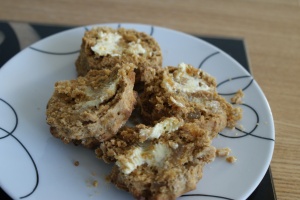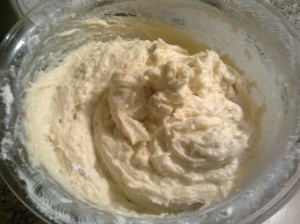Cake and booze: a brilliant combination, wouldn’t you agree? I’m on a baking rota at work where a group of us take turns each week to bake some wonderful goodies to bring in and sell so we can raise money for charity. I like to run an office-wide poll to decide what to bake, and this week porter cake won out (well, it was tied with Victoria sponge, but I decided to make something I hadn’t brought into work before).
I’ve made this once before (the recipe is from BBC Good Food 101 Cakes & Bakes) and really like it; I particularly love how the dried fruit is cooked in a mixture of porter, butter, sugar and orange juice and zest. You can taste the porter in the fruit, but it’s not as overpowering as those brandy-soaked fruit cakes you tend to pig out on at Christmas.
The cake isn’t particularly difficult to make, but it does take a little longer than your average cake due to having to simmer the raisins in the liquid, butter and sugar, let it cool, etc. It’s also baked for up to 1.5 hours at a very low heat (I actually needed to leave it in for a bit longer), and for best results you need to leave it in the tin for a couple of days to become even more delicious.
I made this last night and sliced it up earlier this evening, so it has had about a day in the tin. To be honest, it doesn’t seem to be any different to when I made it last time and left it for two and a half days, so if you’re in a rush I would say don’t worry about leaving it for ages before serving.
I’m not sure how well it’s going to go down at work; most of my colleagues tend to favour chocolate-based baked goods, so we shall see how many pieces I can sell! Of course, it’s not the end of the world if they don’t all sell, as it means I can take on the task of polishing off the rest of the cake over the weekend!
P.S. I took the below picture in my bedroom because nearly all the photos I took in the kitchen after slicing the cake up turned out ridiculously blurry. Apologies for inflicting my garish duvet cover on you!















